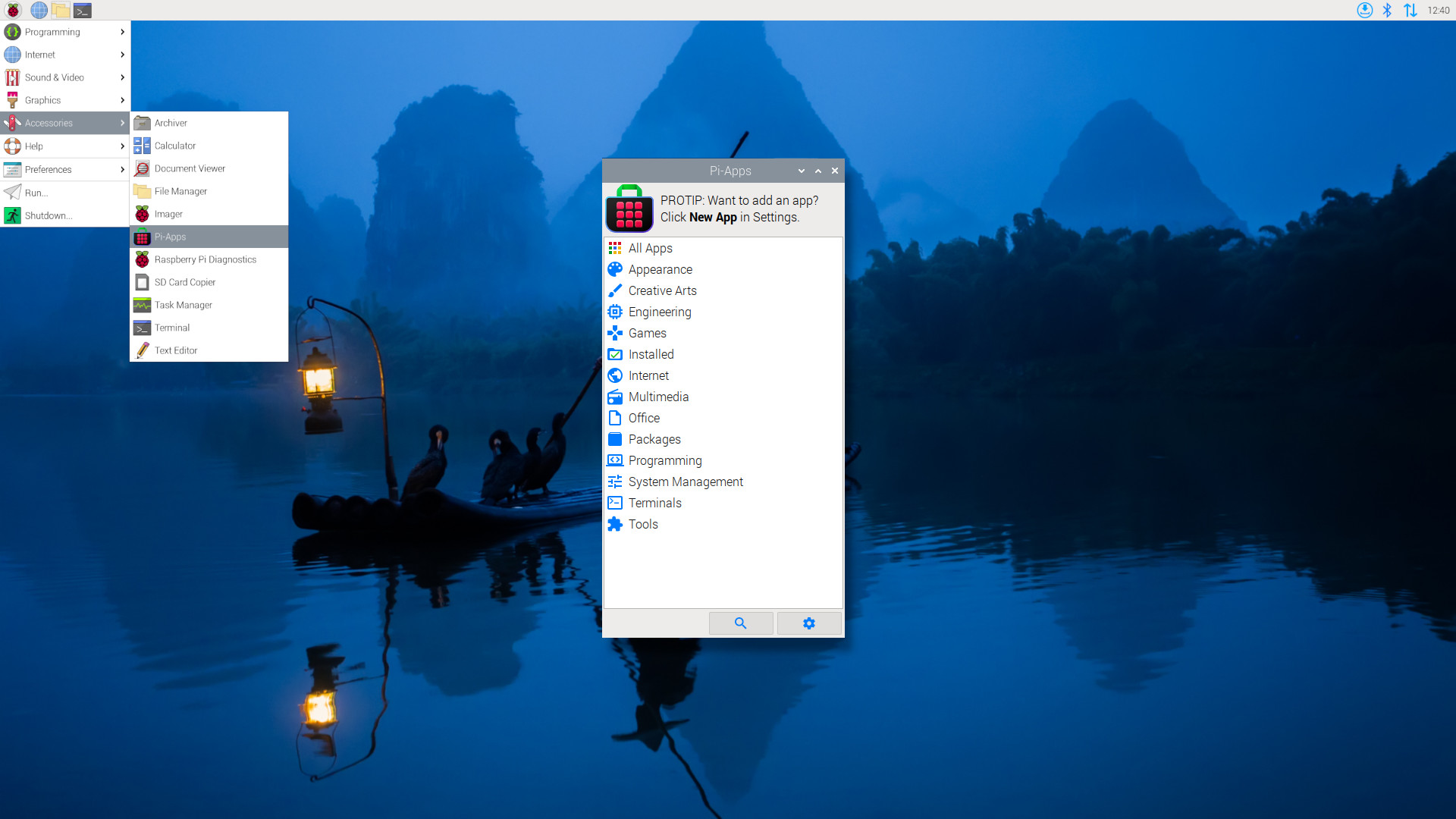Raspberry Pi Fleet Management: Downloads, Tips & Tricks!
Does the thought of overseeing numerous Raspberry Pi devices scattered across various locations leave you feeling overwhelmed? It shouldn't. With the proper methodologies and resources, transforming a seemingly chaotic setup into a streamlined, efficient operation is entirely achievable. This comprehensive guide will demystify the complexities of managing a fleet of Raspberry Pi downloads, walking you through every crucial step from initial setup to advanced optimization.
Successfully managing a fleet of Raspberry Pi downloads hinges on meticulous preparation. The last thing you want is to be caught off guard, attempting to manually update dozens, or even hundreds, of devices individually. Automation and intelligent management techniques are paramount. This goes far beyond simply downloading files; it's about guaranteeing the smooth and effective operation of your entire Raspberry Pi network.
Before diving into the technical details, it's important to emphasize that this isn't exclusive to seasoned tech professionals or IT experts. Even if you're new to the world of Raspberry Pi, you can effectively manage a fleet. We'll cover everything step by step, ensuring no one feels left behind. So, are you ready to begin?
- Discover Telugu Cinema News Reviews Amp Alternatives To Movierulz
- Bhad Bhabie Sex Tape The Untold Story Career Impact
| Topic | Description |
|---|---|
| Definition of Raspberry Pi Fleet Management | Overseeing multiple Raspberry Pi devices in a centralized way, managing software updates, security patches, and configuration changes across all devices. |
| Importance of Managing a Fleet | Maintaining security and efficiency, ensuring every device is up to date and secure, saving time and effort in the long run. |
| Benefits of Fleet Management | Centralized control, automated updates, improved security and performance, easier troubleshooting and monitoring. |
| Management Platforms | BalenaCloud, Fleet Commander, Raspberry Pi Imager - each with strengths for different deployment scales. |
| Automating Updates | Using scripts and cron jobs to regularly check for and install updates. |
| Security Measures | SSH for remote access, enabling SSH in configuration, generating SSH keys. |
| Monitoring Tools | Prometheus and Grafana for collecting metrics and visualizing data. |
| Scaling Strategies | Optimizing resource usage, using lightweight Linux distributions like DietPi or Alpine Linux. |
| Troubleshooting | Checking network settings, restarting router, rebooting devices for connection problems. |
| Staying Updated | Subscribing to Raspberry Pi newsletters like Raspberry Pi Foundation Newsletter, Adafruit Newsletter, and element14 Community Newsletter. |
Let's begin by defining exactly what managing a fleet of Raspberry Pi downloads entails. At its core, it's the practice of centrally supervising numerous Raspberry Pi devices. Whether you're overseeing a modest home network or a vast industrial installation, the fundamental principles remain consistent. The responsibilities involve handling software upgrades, applying security fixes, and implementing configuration modifications across all devices.
The significance of managing a Raspberry Pi fleet extends beyond mere convenience; it's crucial for preserving both security and operational efficiency. Consider the potential ramifications: a single compromised device can jeopardize the entire network. Effective fleet management ensures that each device remains current and secure, saving considerable time and effort in the long run.
- Centralized control over all devices offers a unified management point.
- Automated updates and patches minimize manual intervention and ensure consistent security.
- Improved security and performance protect against vulnerabilities and optimize device operation.
- Easier troubleshooting and monitoring allow for quick identification and resolution of issues.
Now that you grasp the importance of fleet management, let's explore the process of setting up your Raspberry Pi devices. The setup phase is foundational, establishing the framework for all subsequent operations. This involves selecting a suitable management platform, configuring each device, and establishing secure communication channels.
- Unlock Your Inner Artist Diva Flawless Video Revolution
- Masa49 Com Your Ultimate Guide Discover Top Online Resources
The marketplace offers several platforms specifically designed for managing fleets of Raspberry Pi devices. Some of the more prevalent options include:
- BalenaCloud, known for its robust features for large-scale deployments.
- Fleet Commander, designed to simplify fleet management with a user-friendly interface.
- Raspberry Pi Imager, an excellent choice for smaller setups and initial device provisioning.
Each platform comes with its own set of advantages, so selecting the one that aligns with your specific requirements is essential. For instance, BalenaCloud shines in large-scale scenarios, whereas Raspberry Pi Imager is ideally suited for smaller, more straightforward configurations.
With your devices successfully configured, the next step involves managing software downloads. This is where the automation capabilities truly demonstrate their value. Aim to automate as much of the process as possible to minimize time expenditure and reduce the likelihood of errors. Here are some strategies for effective download management:
Scripts are invaluable when it comes to automating updates. A simple script can be written to periodically check for updates and download them automatically, eliminating the need for manual updates on each device.
Consider a bash script like this:
sudo apt update && sudo apt upgrade -y
This command refreshes your package list and installs any available updates. You can schedule this script to execute daily using a cron job, ensuring your devices are always up-to-date without manual intervention.
Security is paramount when managing a fleet of Raspberry Pi devices. Protecting your network from unauthorized access is critical. Here are some measures you can take to bolster the security of your fleet:
SSH (Secure Shell) is a protocol that allows secure remote access to your Raspberry Pi devices. It's essential for managing a fleet because it ensures that all connections are encrypted and secure, preventing eavesdropping and unauthorized access.
Here's how to configure SSH on your Raspberry Pi:
- Enable SSH in the Raspberry Pi configuration settings, typically accessible via the raspi-config tool.
- Generate SSH keys on your local machine for passwordless authentication.
- Copy the public key to your Raspberry Pi devices, adding it to the authorized_keys file in the .ssh directory of the user account you'll be using.
Monitoring the performance of your fleet is vital for maintaining smooth operation. Keep track of metrics like CPU usage, memory consumption, and network activity. Several tools are available to assist with this, including:
Prometheus and Grafana are powerful tools for monitoring your Raspberry Pi fleet. Prometheus collects metrics from your devices, while Grafana provides a visually appealing and intuitive interface for analyzing the data.
To set them up:
- Install Prometheus on your server, configuring it to store the collected metrics.
- Configure Prometheus to scrape metrics from your Raspberry Pi devices by installing and configuring an appropriate exporter on each device.
- Set up Grafana to display the data by creating dashboards that visualize the metrics collected by Prometheus.
As your fleet expands, your management strategy must adapt accordingly. This may involve adding more devices, upgrading hardware, or optimizing software configurations. Consider these tips for scaling your fleet effectively:
Resource optimization is essential when scaling your fleet. Maximize the efficiency of each device by ensuring resources are used judiciously. This might entail fine-tuning settings, upgrading hardware components, or utilizing lightweight software alternatives.
For instance, using lightweight Linux distributions such as DietPi or Alpine Linux can significantly reduce resource consumption on your devices, allowing them to operate more efficiently.
Even with careful planning, issues are inevitable. A robust troubleshooting strategy is crucial for addressing these challenges. Here are some common issues and their solutions:
Connection issues are among the most frequent challenges when managing a fleet. If you encounter difficulties connecting to a device, try the following:
- Verify your network settings, ensuring the device has a valid IP address and can communicate with the network.
- Restart your router or modem to refresh the network connection.
- Reboot the affected device to resolve any temporary software glitches.
The Raspberry Pi ecosystem is constantly evolving, so staying abreast of the latest trends and developments is crucial. This will enable you to optimize your fleet and remain at the forefront of innovation.
Subscribing to Raspberry Pi newsletters is a great way to stay informed. These newsletters provide invaluable insights into new features, updates, and best practices.
Consider subscribing to newsletters like:
- Raspberry Pi Foundation Newsletter, the official source for Raspberry Pi news and updates.
- Adafruit Newsletter, featuring a wide range of electronics projects and tutorials.
- element14 Community Newsletter, offering a forum for discussions and sharing of projects.
In essence, while managing a fleet of Raspberry Pi downloads may initially seem complex, it's entirely manageable with the right strategies and tools. By prioritizing automated updates, robust security measures, and proactive performance monitoring, you can ensure the seamless and efficient operation of your entire fleet. Embrace these practices and elevate your Raspberry Pi setup to new heights.
- Understanding the Basics of Raspberry Pi Fleet Management
- Why Managing a Fleet is Important
- Setting Up Your Fleet for Success
- Choosing the Right Management Platform
- Managing Software Downloads Across Your Fleet
- Automating Updates with Scripts
- Securing Your Raspberry Pi Fleet
- Using SSH for Remote Access
- Monitoring Your Fleets Performance
- Using Prometheus and Grafana
- Scaling Your Fleet as Needed
- Optimizing Resource Usage
- Troubleshooting Common Issues
- Connection Problems
- Staying Up-to-Date with Raspberry Pi Trends
- Subscribing to Raspberry Pi Newsletters
- Unlock Your Inner Artist Diva Flawless Video Revolution
- Vegamovies Your Guide To Free Movie Streaming Online

Buy a Raspberry Pi 5 Raspberry Pi

How to manage applications on your Raspberry Pi with PiApps Tom's

Raspberry Pi Fleet Management with Qbee